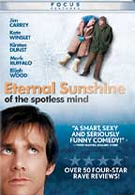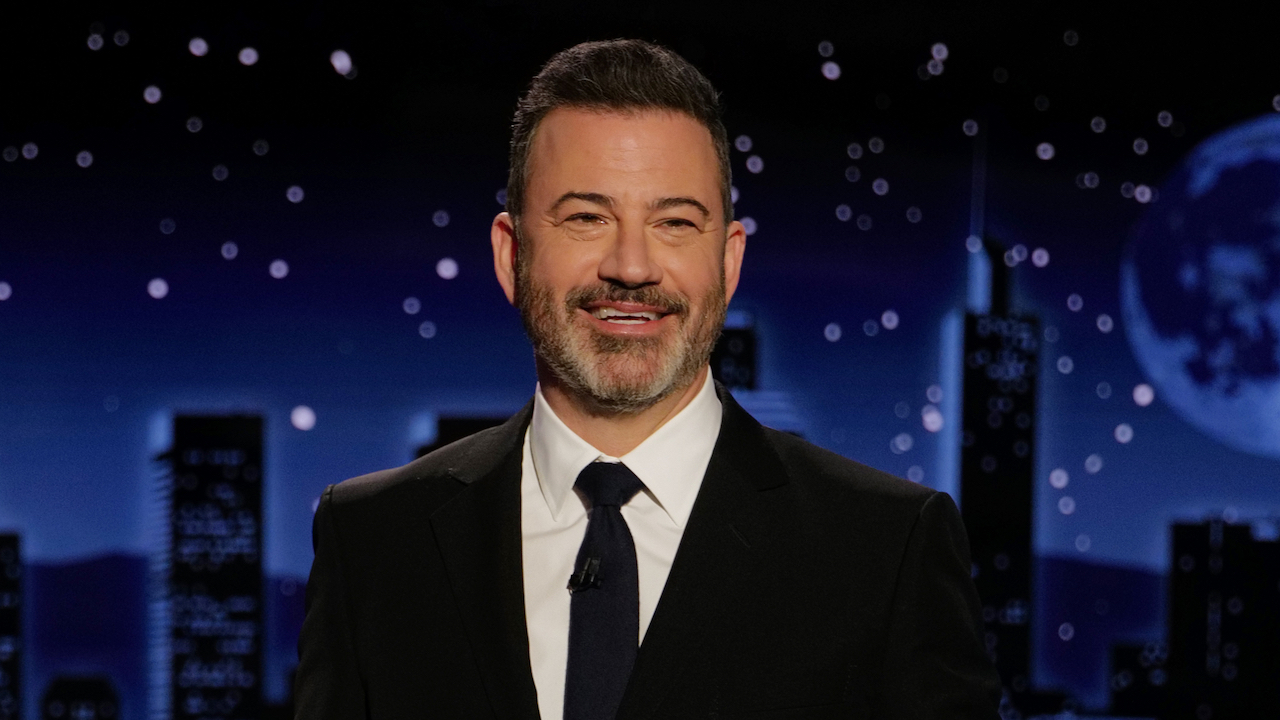There’s just something about being in love. At first, when everything is new, it seems the person you’re in love with can do no wrong. As you adapt to this new person though, what once seemed unique and interesting can become annoying and aggravating. The person you fell in love with might suddenly be a person you completely want to forget. That’s where Eternal Sunshine of the Spotless Mind comes in. Eternal Sunshine takes place in two different worlds. One part is the real world, a world where Joel Barish (Jim Carrey) and Clementine Kruczynski (Kate Winslet) have recently broken up. While Joel attempts to reconcile things with Clementine, he discovers she no longer even recognizes him. Thanks to the help of Lacuna Inc., Clementine has had her memories of Joel erased. Joel decides to do the same in retribution, which leads to the second world of the film - the world of Joel’s memories.
Joel’s memories make up the bulk of the film, as we watch Joel and Clementine’s relationship in reverse, from breakup to first meeting. It’s a dream world, where everything is vague and, as memories are apt to do, pieces disappear and change without any notice. This isn’t helped by the memories themselves being erased, and soon Joel starts to realize just what he’s losing by giving up these memories. As technicians in the real world work on the memory deletion process, Joel and Clementine attempt to run and hide, hoping to keep some part of their former relationship safe in Joel’s mind.
That’s a pretty heady concept for a movie, and it’s really no surprise it comes from the mind of Charlie Kaufman (Being John Malkovich) and Michel Gondry, who previously teamed with Kaufman on Human Nature. With Kaufman’s creative ideas, and Gondry’s impressive visual direction, Eternal Sunshine is not just a unique and brilliant idea, but one that’s pulled off with solid execution within some pretty surreal imagery.
Like Kaufman’s other films, Eternal Sunshine is a fairly strong character piece, putting great pressure on the actors to convey the emotions required to move the piece along. Kate Winslet is no stranger to these kind of pieces, but the casting of Jim Carrey seems extremely out of place at first glance, despite his successful stretch into more serious parts with The Majestic and The Truman Show. Carrey truly shows how far his acting abilities reach in this film though, playing a total Un-Carrey type part. In interviews Winslet pointed out that both of them play against type in this film - she plays a Jim Carrey type character, and he plays a very Winslet type dramatic character, but that extends beyond the two leads. Mark Ruffalo’s Stan is almost the opposite end of the spectrum from the romantic lead he played in this year’s 13 Going on 30, and even Kirsten Dunst is forced to stretch her acting muscles as Mary, a receptionist for Lacuna Inc. Every member of the cast, including bit performers Elijah Wood and Tom Wilkinson are dead on in their parts, helping make connections that are so essential to this type of film.
When I first saw this movie in theaters, I didn’t like it as much as I wanted to. I was very interested in the concept behind the movie, but something just didn’t click with me. I wanted the movie to be better then it was. Now that it’s on DVD and I’ve seen it again I can gladly say I was wrong. I don’t know if I was just in a different mental or emotional state the first time I saw it, or if the film’s intricately detailed emotions just required a second viewing. Possibly even (ironic given the film’s premise) I just remember it differently than it actually is. Whatever it was, this film is now what I wanted it to be, and I found myself very strongly connected with the characters, especially the romance between Joel and Clementine.
See, what the film reminds us of, is that period in a relationship where being in love has nothing wrong with it, where everything is fresh and new, before familiarity sets in. It shows us how a person who was so angry with his lover that he decided to erase her can remember how much he loved that person, and how, deep down inside, he never wants to let her completely go. It’s a powerful emotional message that is then tied in with the concept that, if you are meant to be together, nothing you do is going to stop that. Some things are just meant to be. There’s a kind of emotional comfort in both of those thoughts, and despite watching a tragic story of a love being erased, the film makes you feel a bit better about love, and relationships in general. As I said before, I wasn’t the biggest fan of this film when I saw it in theaters, and I think getting to see the movie a second time really helped me get what I missed before. Hopefully this release on DVD will help make the movie more accessible to those who missed the movie or its ideals in the theater.
The release sports a small amount of extras, just enough to whet your appetite and leave you wanting more. The film itself has a commentary track with writer Charlie Kaufman and director Michel Gondry, which is a bit of a mixed blessing. Both writer and director talk about ideas they had behind the scenes, and get a little bit into the execution of those ideas. However, Gondry’s thick French accent makes it difficult at times to fully understand what he’s saying. He also has a bad habit of narrating the action on screen from time to time. Luckily Kaufman quickly catches Gondry for the most part and puts him back on track, asking questions about the director’s decisions and helping steer the conversation to something more interesting.
Your Daily Blend of Entertainment News
Gondry is also featured in a conversation between the director and Jim Carrey. The two talk about the importance of character work, and the relationship Carrey and Winslet had to build. There is some talk about how the production had a tendency to be somewhat guerilla, taking advantage of a passing circus to add to the surreal memories of Joel Barish. It falls prey to some of the same problems as the commentary, but luckily Carrey does just as good a job as Kaufman in steering the conversation in the right direction.
A brief look behind the scenes is given in a short featurette, unfortunately much too short. Cast and crew talk about the themes of the film, and some of the production, but just as it gets interesting it’s over. One of the major disappointments of this is the hinting of the organic methods used to create some of the visual effects in the film, using hidden doors to move actors around so shots could be continuous to add to the dreamlike quality of the memories. I would love to have seen an entire featurette focused just on the visuals of the movie, but alas nothing is included other then a brief mention in this one featurette.
There are a couple of deleted scenes, although there is no introduction for them, and with a movie as out of order and mixed up as this film is, it’s a little difficult to guess exactly where the scenes would have gone, with the exception of the first scene. That one shows Joel returning home and calling his former girlfriend Naomi before he calls Clementine from the number on his hand. The other scenes include Joel and Clementine’s first date, and the two making out, but again, the placement of the scenes is somewhat vague.
Finally, two semi-related extras are included. The first is an infomercial style commercial for Lacuna Inc., the fictional memory deletion company featured prominently in the film. The second is a music video for The Polyphonic Spree’s “Light & Day” which exclusively uses footage from the movie to make up the entire video, but yet I couldn’t locate the song in the movie anywhere. If you haven’t seen the video... well, it’s interesting. It uses that creepy method of replacing the mouth of the actor with a mouth phrasing the desired words, a method utilized prominently on NBC’s late night talk shows several years ago. When it’s just the mouths being replaced it looks kind of cheap, but eventually houses, furniture, and food start mouthing the words, and that’s when you realize the amount of effort that went into this interesting music video.
Light on extras, it’s fortunate the movie itself is a solid selling point for Eternal Sunshine of the Spotless Mind. While I would like to have seen a more in depth look at the film’s stunning visual effects, at least I now have the ability to watch the movie over and over, catching little things that I missed before and enjoying the themes held within the extraordinary story.

